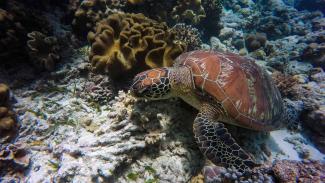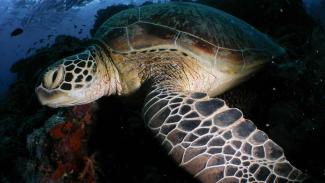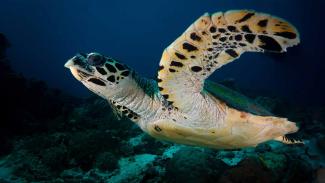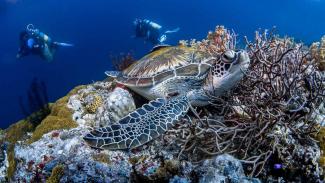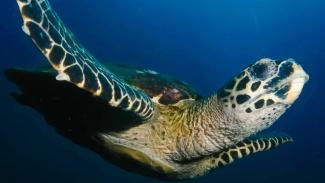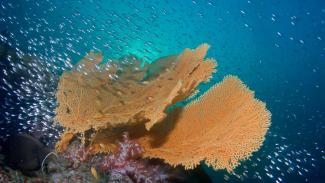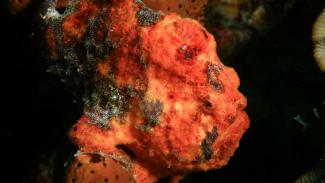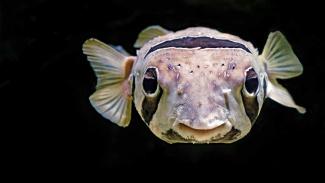The Cheloniidae family includes six of the seven species of marine Turtle, the only other being the Leatherback Turtle a member of the Dermochelyidae family.
Turtles are a favourite sighting on many reefs still lucky enough to have them. Despite being one of the most endangered Turtle species, the Hawksbill Turtle is the species that you are most likely to see on a dive as they are the only species to live on coral reefs.
They seem to have lots of character and often appear to cry, due to the secretion of salts & fluids from a gland near the eyes.
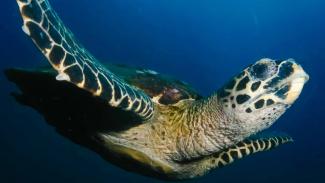
It is thought they are able to plot their course using the earth’s magnetic field to create a mental map.
Family variety
Behaviour
Being replies and air breathing they have to surface periodically to breathe and are often spotted on their way to or from the surface.
Reproduction
Small juveniles are pelagic, taking shelter in flotsam such a weed rafts and eating first plankton, then small jellyfish and floating vegetable matter. When they reach around 25cm they move to coastal waters and find a suitable home near a good feeding ground.
Diet
Defences
FACTFILE
SPECIES: 6
SIZE RANGE: 70-213 cm
DISTRIBUTION:
Found in tropical and temperate regions. Some species are rare due to exploitation.
HABITAT:
Found in coastal waters near seagrass beds and other favourable feeding grounds. Turtles migrate long distances in open ocean.
THREATS:
Prized for their rich meat, valuable shell, and their eggs. Often die as by-catch in nets. Plastic and habitat loss are other major threats. Vulnerable to extinction.
Identification tips
-
Marine Turtles have excellent eyesight underwater, however, they are quite short-sighted on land.
-
A gland near the eye releases excess salt and fluids ingested when drinking sea water. These glands also keep the eyes moist when females are on land laying eggs.
-
The sea turtle’s shell, or “carapace”, is streamlined for swimming through the water. Unlike other turtles, sea turtles cannot retract their legs and head into their shells.
-
Front fins are used as wings for propulsion, they are large and sensitive to touch.
-
Sea Turtles don’t have teeth. Instead, their mouths are sharp and beak-like and well-suited for crushing or tearing their food.
Popular species
Turtles are a highlight of any dive. Here are the species most commonly encountered.
Hawksbill Turtle
(Chelinus impracia)

The Hawksbill turtle is one of species most commonly seen by divers, as it often makes its home on or near coral reefs. It is a smaller species of turtle only reaching 1m in length, often found resting on a ledge or munching on coral or sponges.
Green Turtle
(Chelinus chelonius)
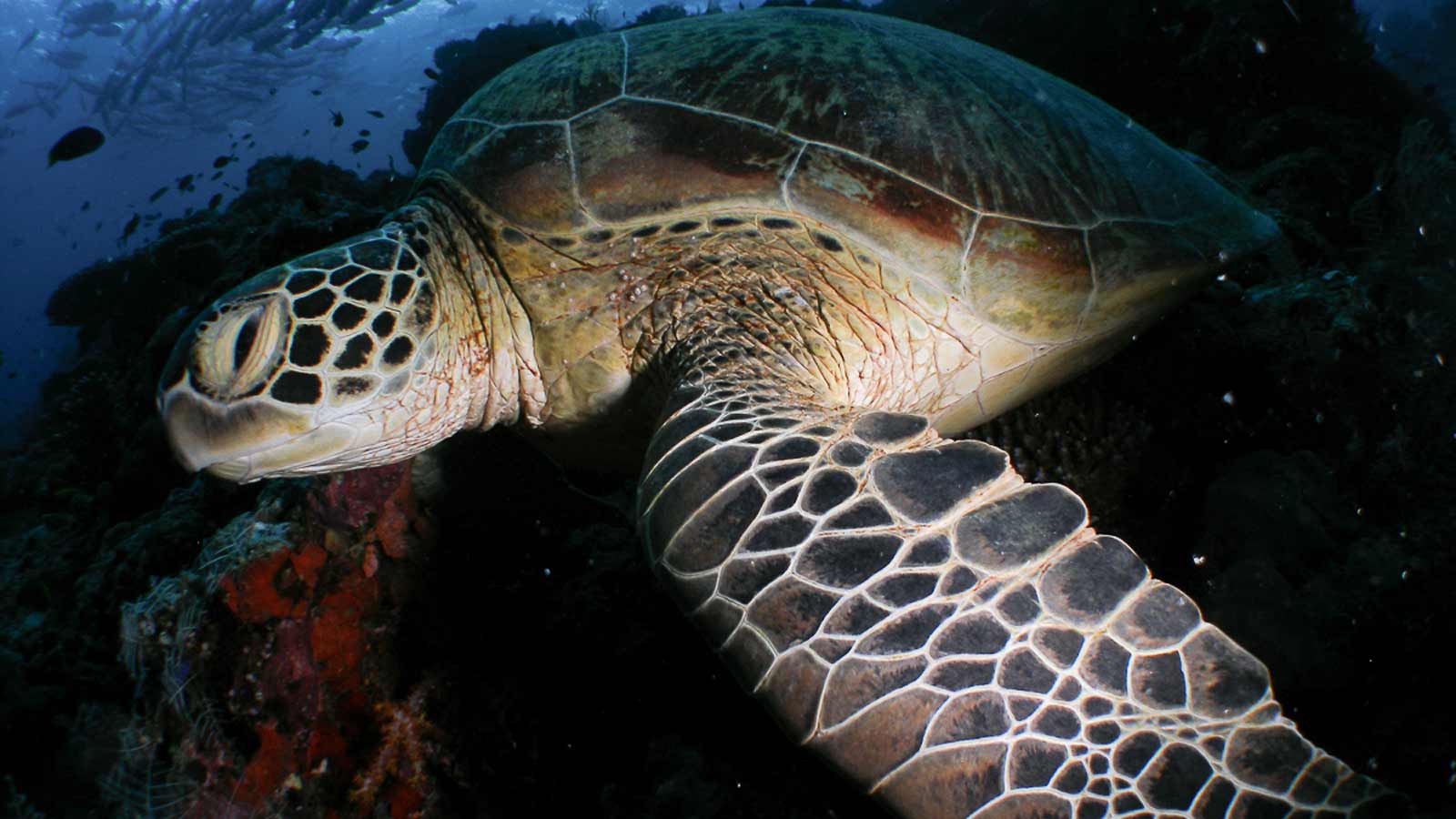
The Green turtle can grow up to 1.5m. Adults are totally vegetarian feeding primarily on sea grass. They can be identified by their distinctive head and short snout and unhooked mouth shape.
Leatherback Turtle
(Dermochelys coriacea)
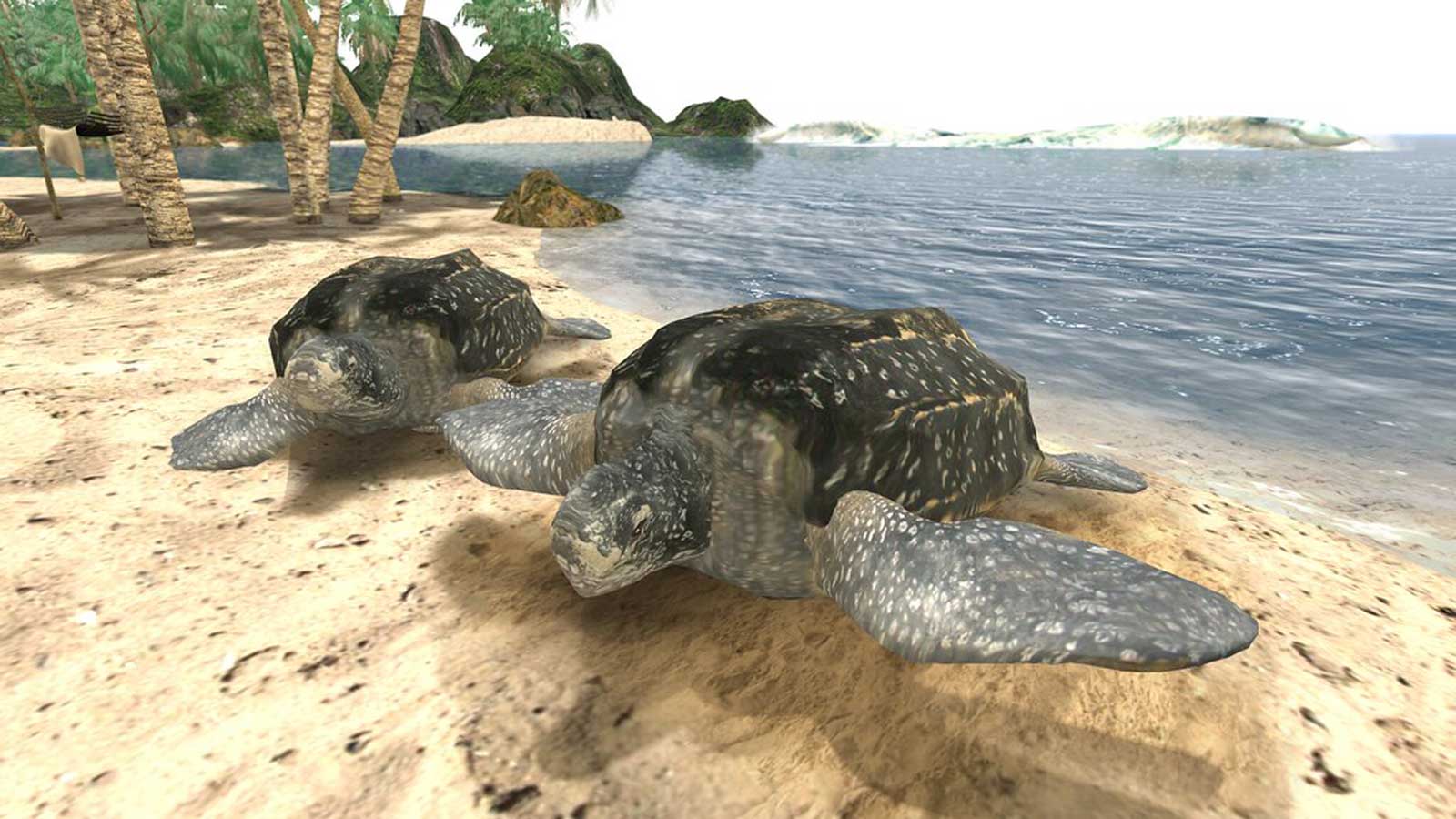
Largest family member, can grow up to 2.2m. Unlike other marine turtles the lack of a bony carapace instead it has thick, leathery skin over its back. Found predominantly in the open ocean and very rare near land, unless coming in to lay eggs.



